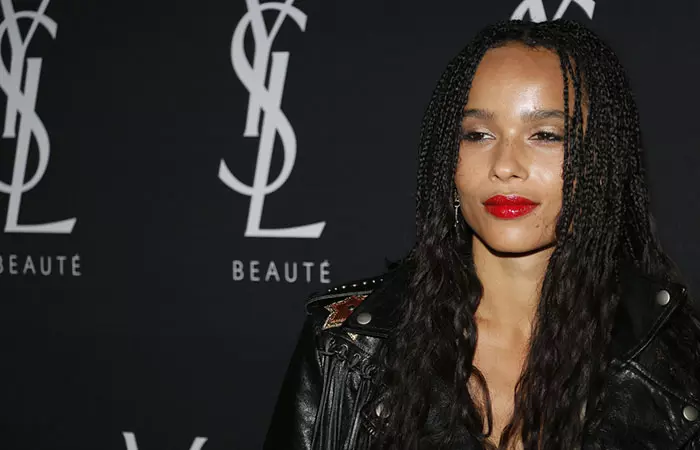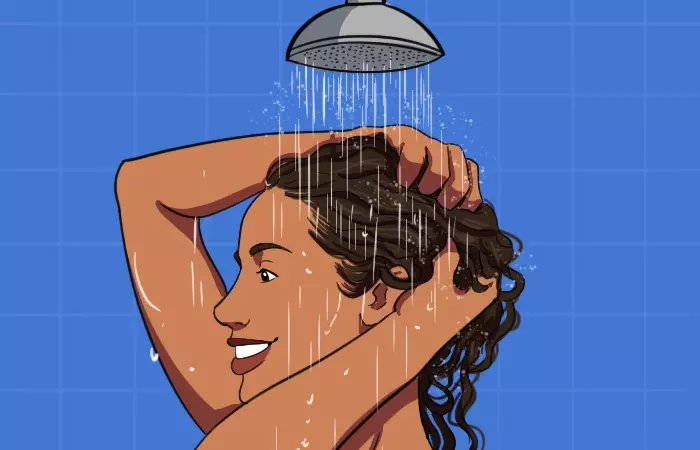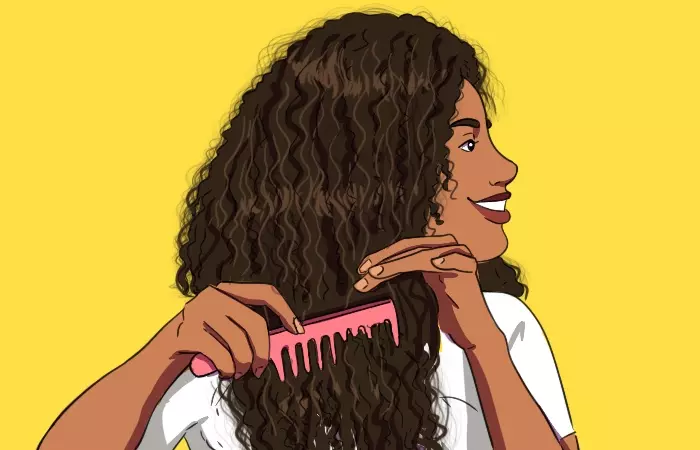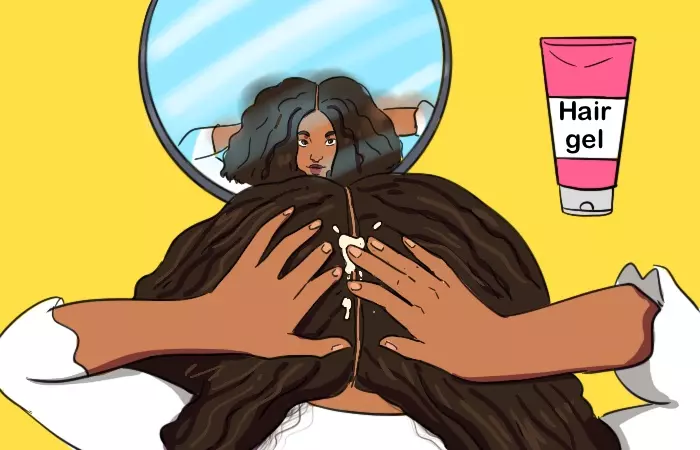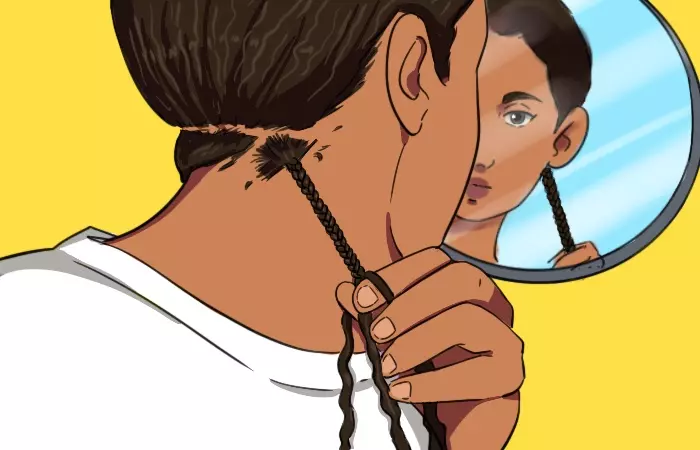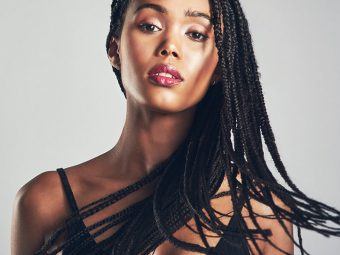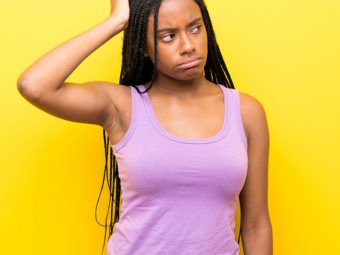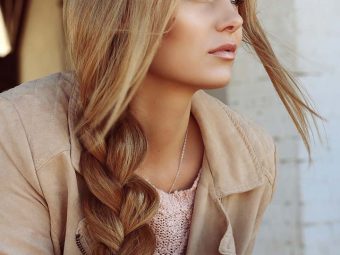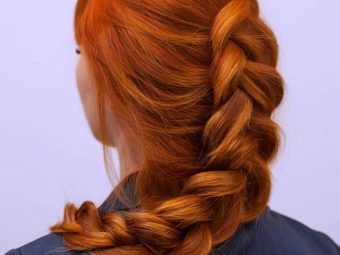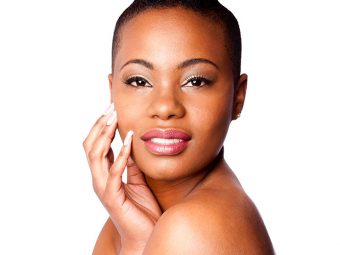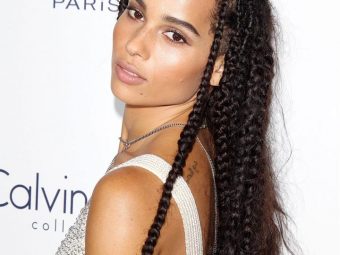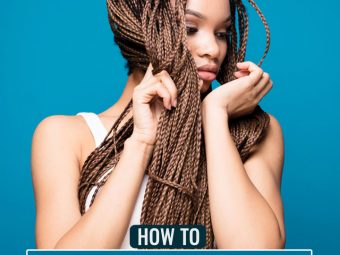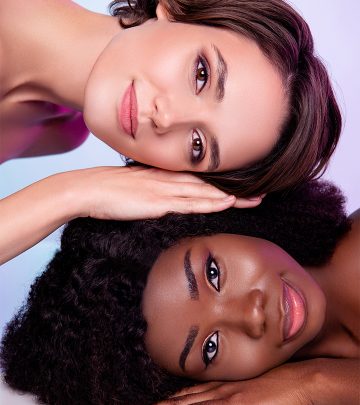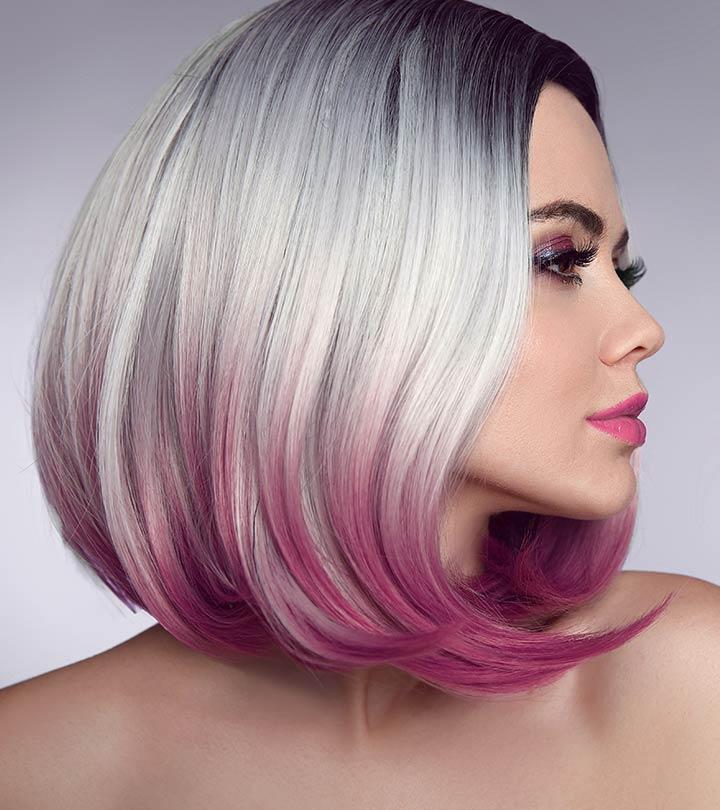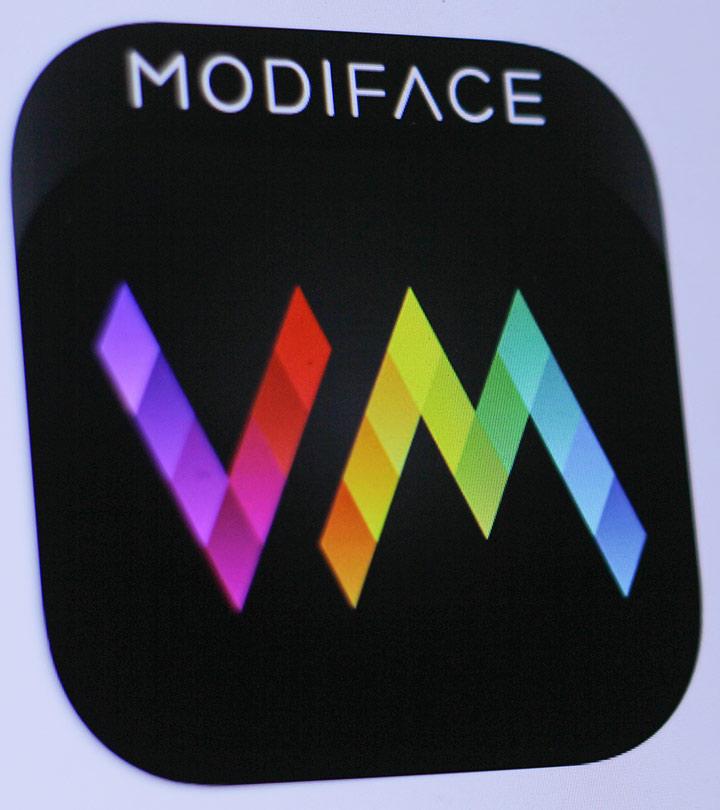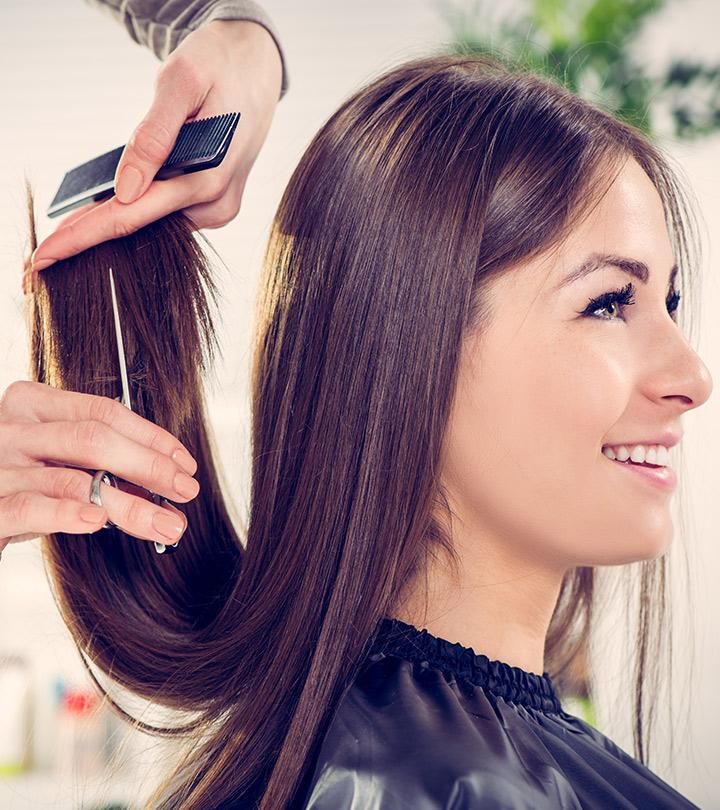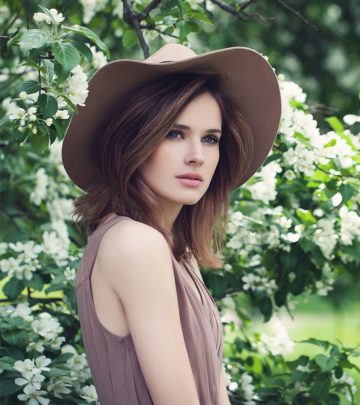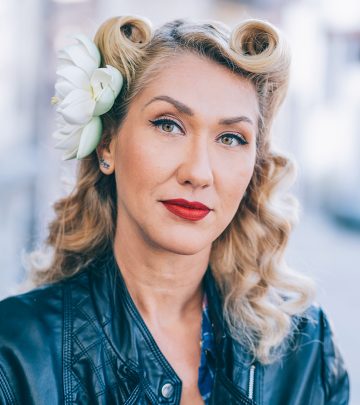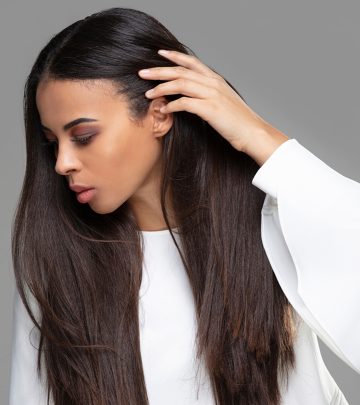How To Do Knotless Braids: A Step-By-Step Guide
Explore the benefits and drawbacks associated with this cool and stunning hairstyle.
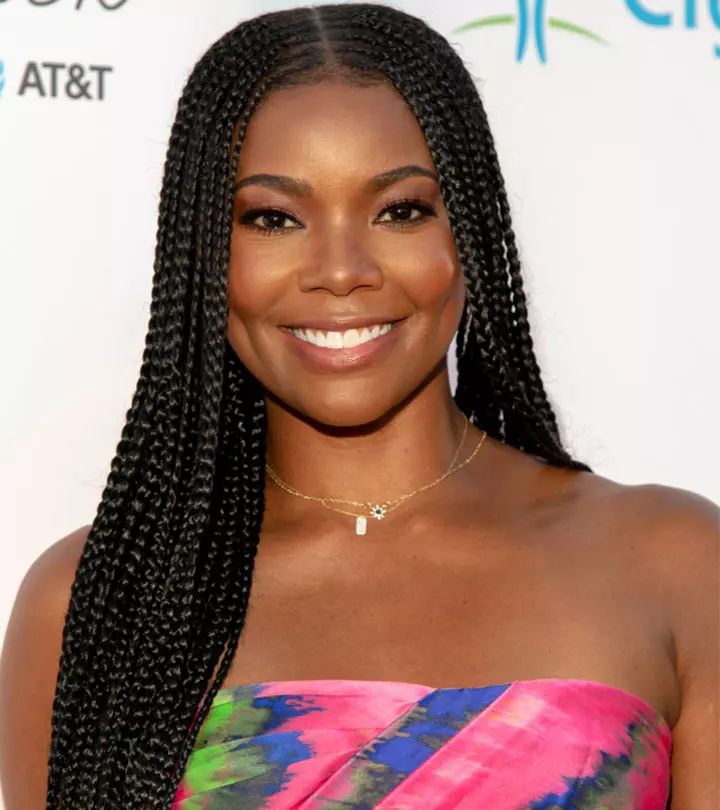
Image: Shutterstock
If you are looking for a simple yet comfortable way of braiding your hair without straining your scalp, you can opt for knotless braids. Thanks to their glamorous look, even celebrities like Gabrielle Union and Beyonce had sported them. But before you get all excited, it is important you know how to do knotless braids to get a look that exudes confidence and style.
This braid style is not just any passing fad, but a versatile look that shields your hair while making a bold statement. Its ability to effortlessly transition from casual to formal settings makes it popular among seasoned enthusiasts and beginners alike. So, without further ado, check out this article for a simple guide on how to master this hairdo, its benefits, risks, cost, and more.
 Before You Get Started
Before You Get Started- Use a silk pillowcase while sleeping with your braids to reduce friction.
- You can apply some styling gel to your knotless braids to help combat frizz.
- Use castor or coconut oil after washing to moisturize your scalp and strengthen your hair.
- You may use edge control to style and keep your baby hair in check.
In This Article
What Are Knotless Braids?
Knotless braids represent a modern twist on a timeless hairstyle. While traditional braids use knots to secure the extensions, knotless braids seamlessly blend the extensions into one’s hair for a more natural appearance. This technique not only eliminates the discomfort often associated with tight knots. Their versatility and durability have made them a favorite among those seeking a stylish and low-maintenance protective hairstyle.
 Did You Know?
Did You Know?Knotless braids are a great way of elevating your hair game. But do they damage your hair like traditional box braids? Find out in the section below.
Do Knotless Braids Damage Your Hair?
Knotless braids involve incorporating extensions along the length of your real hair. Furthermore, they offer relief to those sensitive to synthetic braiding hair. Since the extensions do not come in direct contact with the scalp, it reduces the risk of irritation, itching, or redness.
However, it is essential to note that improper installation or leaving them for an extended period can still lead to damage. Tight braids, in particular, may increase the risk of hair breakage or thinning over time.
Regular maintenance, gentle handling, and timely removal are crucial in preserving the health of your hair while enjoying the benefits of this stylish braiding technique. Scroll down to the next section for a detailed guide on how to do knotless braids like a pro.
How To Do Knotless Braids?
With just a little patience and practice, you can master the art of smooth and stylish knotless braids. Here is a step-by-step tutorial for your reference:
- Wash Your Hair
Wash and condition your hair with moisturizing products to ensure it is clean and hydrated. Wait until your hair is fully dry before moving on to the next step.
- Detangle Your Hair
Use a wide-tooth comb to gently detangle your hair, starting from the ends and working your way up to the roots. You can apply a leave-in conditioner to add moisture and make the process easier.
- Divide Your Hair Into Sections
Use hair ties, rubber bands, or claw clips to divide your dry hair into manageable sections. This helps keep the entire braiding process organized and less overwhelming. Adjust the number of sections based on your hair’s length and thickness.
- Add Hair Cream
Apply a nourishing hair cream, wax, or more leave-in conditioner to your strands to protect them during braiding.
- Create Your Parts
Use a rat tail comb to create precise parts for your braids. You can choose box parts, triangle parts, or any other style of your choice. Ensure each part is the right size for the braids you want to avoid borrowing hair from other sections
- Make The Braids
Take one section and braid it into a simple three-strand braid without tying a knot at the root. Apply some hair gel to the hair roots of the section to hold the braid in place. As you braid, gradually add in the strands of braiding hair that match the length of your natural hair. Once done, spray holding spray to prevent them from loosening. Repeat this for the rest of the sections of hair.
 Quick Tip
Quick TipRayanne Samantha, a YouTuber, shares her experience of doing knotless braids in her video. She says, “It’s so much easier for the summertime. These braids lasted pretty long, you guys, so I am pretty excited about that. I think the next time I do a protective style, I am going to add some color, so I am really excited to do that as well (i).”
Following these steps will ensure you create stunning knotless box braids in no time. However, that is not the end of the journey. Washing and keeping them clean will ensure your braids last long without any issues. Check out the next section to learn how to do so.
How To Wash Knotless Braids?
Washing knotless braids is essential for maintaining scalp health and prolonging the lifespan of the hairstyle. Here is how you do that:
- Spray some gentle moisturizing shampoo directly onto your scalp, focusing on the roots.
- Gently massage your scalp with your fingertips to clean away any dirt, white residue, and buildup.
- Rinse out the shampoo with lukewarm water, tilting your head backward to avoid water running down your braids.
- Use a leave-in conditioner to the length of your braids. Pay extra attention to the ends to keep them moisturized and prevent dryness. Avoid putting conditioner on the roots to prevent buildup.
- Rinse out the conditioner thoroughly with lukewarm water to ensure that no product residue remains.
- Use an old t-shirt or a microfiber towel to remove excess water from your braids. Avoid rubbing them vigorously as this can cause frizz and damage your hair.
- Let your braids air dry completely before styling them. Avoid using heat-styling tools such as blow dryers, as excessive heat can weaken the braids and lead to breakage.
- Use a specifically formulated dry shampoo for braids in between washes to absorb excess oil and refresh your scalp.
Experts recommend washing your braids every 1-2 weeks, depending on your scalp’s needs, hair type, and lifestyle factors. Apart from washing your braids, how you take care of them will determine the longevity of your braids. Check out the next section to know more.
How Long Do Knotless Braids Last?
This depends on factors such as hair texture, porosity, maintenance, and braid size.
Those with coarser textures can sport knotless up to two to three months, while individuals with silkier and finer textures may sport them up to four to six weeks as they are at a higher risk of separating from the synthetic braiding. Ensure you visit your salon every 4 to 6 weeks for professional touch-ups to combat frizz, dryness, and buildup to extend the lifespan of your knotless braids up to two months.
 Quick Tip
Quick TipApart from longevity, cost should also be factored into your final decision for getting these stunning braids. Find out more about it in the section below.
How Much Do Knotless Braids Cost?
The cost of knotless braid installation can vary depending on factors such as the stylist’s expertise, geographical location, hair type, braid length, technique, personal style preferences, and color mix. On an average, it could range anywhere between $300 to $600
Additionally, the time required for a knotless braid installation is a significant factor in determining the overall cost as it typically takes between four to seven hours. Therefore, individuals interested in getting knotless braids should consult a trained braider to get a quote based on their specific requirements and preferences.
The cost plays an important role in your decision. But before you decide to go for this braided hairstyle, it is important to weigh the pros and cons of these braids to ensure they align with your expectations and lifestyle. Explore what they are in the next section.
Pros And Cons Of Knotless Braids
Knotless braids have gained popularity for their natural appearance, versatility, and comfort. Here are some of the benefits and risks of sporting these uber-stylish braids:
Pros
Some of the advantages of knotless braids include:
- Natural Look: They offer a more natural appearance compared to traditional box braids or other braided styles. The deceased tension on the scalp creates a thinner and less defined look, enhancing the natural aesthetic.
- Versatile: Knotless braids provide numerous styling options that allow wearers to experiment with various looks such as loose and flowing styles or updos. Plus, its adaptable nature makes it suitable for all hair types.
- Reduced Hair Damage: Decreased tension at the roots reduces the likelihood of breakage and damage to the hair. It is a perfect option for those with delicate strands and sensitive scalps.
- Comfortable: These braids exert less pressure on the scalp. This results in increased comfort and minimizes the risk of discomfort or headaches.
Just like any other braid, knotless braids come with their own set of con. Find out what they are below.
Cons
Here are some of the disadvantages of sporting knotless braids:
- Time-Consuming: Knotless braids generally require more time to install compared to traditional braids due to the patience and precise technique required. This may not be ideal for individuals with limited time.
- Special Tools Needed: Achieving optimal results may require using special tools like hair rings or silicone bands, which may add to the overall cost.
- Higher Costs: Knotless braids typically incur higher costs compared to traditional braids due to the extended installation time and specialized technique involved.
- Limited Availability Of Skilled Stylists: Finding proficient stylists skilled in this technique may be more challenging compared to traditional braids as these braids are relatively new.
Many people may confuse knotless braids and box braids due to their similar appearance. However, there are key differences between the two. Find out what they are below.
Knotless Braids Vs. Box Braids
| Features | Knotless Braids | Traditional Box Braids |
|---|---|---|
| Installation Technique | They use the feed-in braid technique with no knots at the roots. | They create knots to attach the braiding hair to the roots. |
| Scalp Tension | They are lighter and place less tension on the scalp. | They may feel heavier and exert more tension on the scalp due to the knots. |
| Durability | They last up to 4 to 6 weeks | They last up to 4 to 8 weeks. |
| Appearance | They appear flatter and more unified with no visible knots. | They appear more defined and structured with visible knots. |
| Maintenance Needs | They require more frequent touch-ups | They are generally low maintenance, but the knots may need tightening |
| Scalp Comfort | They are less restrictive and are more comfortable. | They may cause discomfort, especially if braids are too tight. |
Knotless braids are more than just a protective style; they are stylish and chic, making them a popular option among people today. What’s more, unlike traditional box braids, they are lighter and strain your scalp less, promoting healthy hair growth. But that is not enough. Following a proper wash and maintenance routine will ensure their freshness and longevity. So, whether you sport it for a casual lunch with your girlfriends or a glamorous red carpet event, knotless braids are sure to make a statement wherever you go.
Frequently Asked Questions
What type of hair extensions should I use for knotless braids?
It is recommended to use braiding hair that matches your natural hair texture and color for a seamless blend. While both human and synthetic hair extensions are commonly used, experts recommend using high-quality human hair extensions more often for a natural and authentic look.
What size and length should I choose for knotless braids?
The size and length of your knotless braids depend on what you prefer and how you want to style them. Smaller braids give a more detailed look, while larger braids make a bold statement. Take factors such as your lifestyle, maintenance, and duration into consideration when selecting the length of the braids. If you are unsure about the right length, check with your stylist to help get the best size and length.
How do I remove knotless braids without causing damage to my hair?
First, check where your actual hair length ends and carefully cut off the extensions with a pair of scissors. Then, use a detangling spray or conditioner to soften the braids. Use a rattail comb or your fingers to gently unravel each one, starting from the ends. Once the braids are removed, use a wide-toothed comb to detangle the knot. Finish with a nourishing hair treatment to keep your hair healthy.
Key Takeaways
- Knotless braids involve blending the braid extensions into one’s regular hair for a more natural appearance.
- The absence of knots in this protective style reduces the risk of irritation and hair loss.
- The cost may depend on factors such as the stylist’s experience, braid length, hair type, and salon location.
- Knotless braids appear flatter and require frequent touch-ups. On the other hand, box braids appear more defined and require less frequent touch-ups.
Whether you are a beginner or a seasoned pro, learning how to do knotless braids properly is crucial for their freshness and longevity. Check out this video for detailed instructions on how to achieve these flawless braids every time.
Personal Experience: Source
StyleCraze's articles are interwoven with authentic personal narratives that provide depth and resonance to our content. Below are the sources of the personal accounts referenced in this article.
(i) How to do knotless box braids on yourself | Detailed & Beginner Friendly | My First Time ❤️https://www.youtube.com/watch?v=0P9XPJ1_UfE




